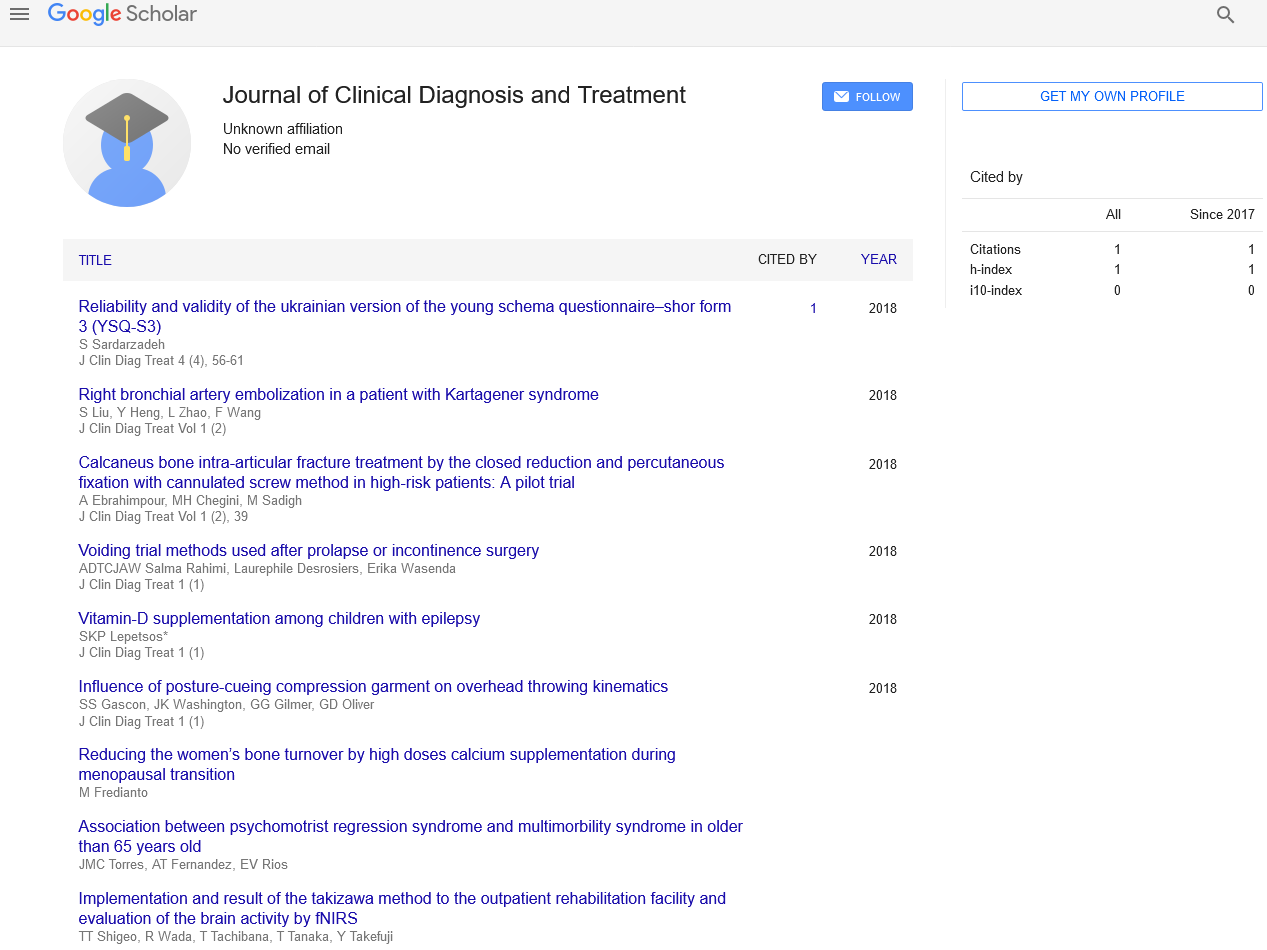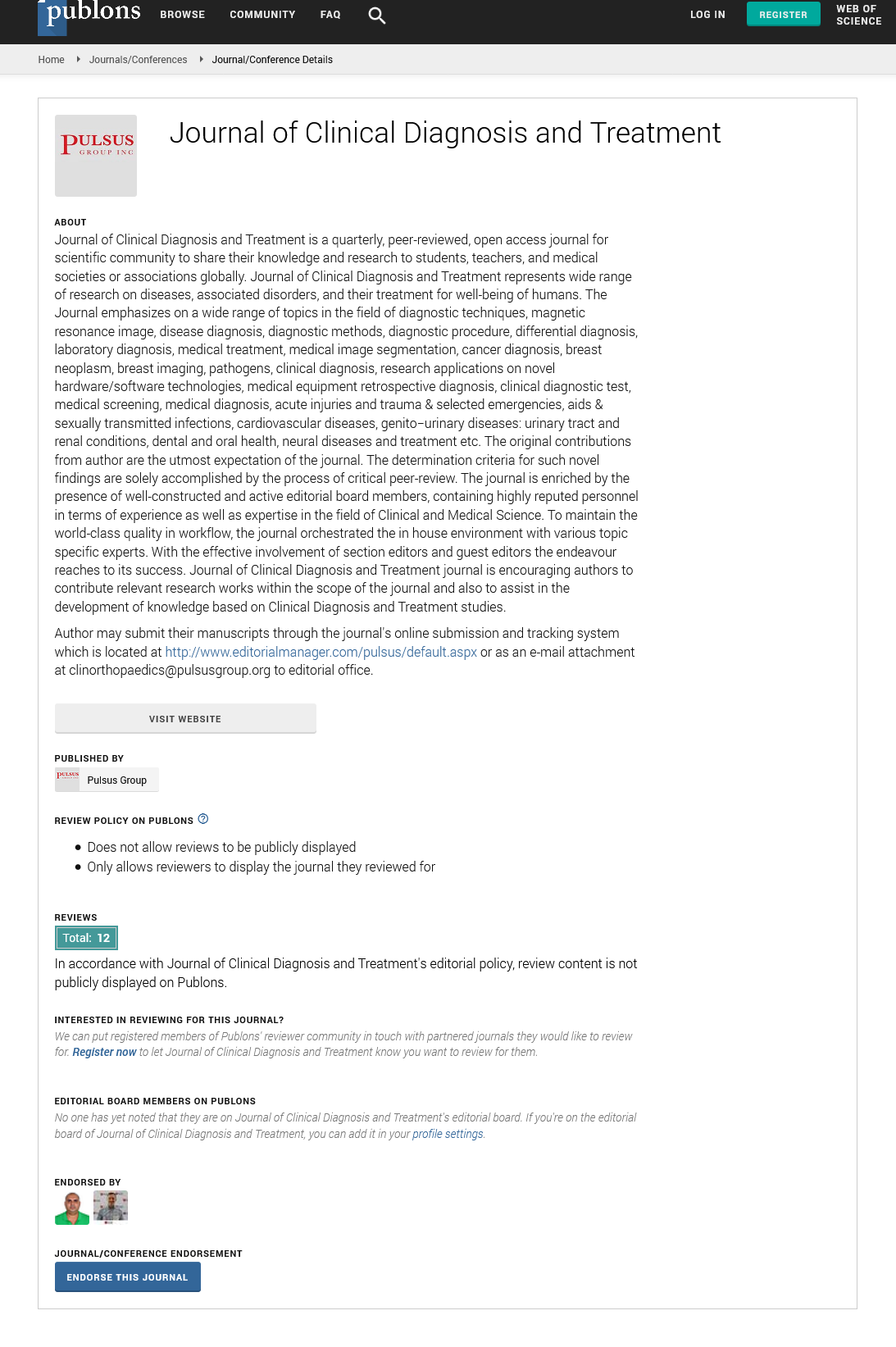Background of cancer, conventional and modern treatments
Received: 03-Mar-2023, Manuscript No. puljcdt-22-5899; Editor assigned: 07-Mar-2023, Pre QC No. puljcdt-22-5899(PQ); Accepted Date: Mar 25, 2023; Reviewed: 15-Mar-2023 QC No. puljcdt-22-5899(Q); Revised: 21-Mar-2023, Manuscript No. puljcdt-22-5899(R); Published: 28-Mar-2023, DOI: 10.37532/puljcdt.23.5(1).1-2
Citation: Wilson V. Background of cancer, conventional and modern treatments J Clin. Diagn. Treat. 2022; 5(1):1-2
This open-access article is distributed under the terms of the Creative Commons Attribution Non-Commercial License (CC BY-NC) (http://creativecommons.org/licenses/by-nc/4.0/), which permits reuse, distribution and reproduction of the article, provided that the original work is properly cited and the reuse is restricted to noncommercial purposes. For commercial reuse, contact reprints@pulsus.com
Abstract
The study of cancer, called oncology, is the work of countless doctors and scientists around the world whose discoveries in anatomy, physiology, chemistry, epidemiology, and other related fields made oncology what it is today. Technological advances and the ever-increasing understanding of cancer make this field one of the most rapidly evolving areas of modern medicine.
Key Words
Carcinoma tumours, Anaesthesia, Sonography, endoscopy
Introduction
The growth in our knowledge of cancer biology has led to remarkable progress in cancer prevention, early detection, and treatment. Scientists have learned more about cancer in the last 2 decades than had been learned in all the centuries preceding. This doesn’t change the fact, however, that all scientific knowledge is based on the knowledge already acquired by the hard work and discovery of our predecessors and we know that there’s still a lot more to learn. Although we are aware that there is still a lot to learn, this does not change the reality that all scientific knowledge is built on the information that our forebears have amassed through their labour of love and discovery.
History
After cardiovascular disorders, cancer ranks as the second most common cause of death worldwide. In the US, one-third of women and half of the men will develop cancer at some point in their lives. Today, early detection and treatment of cancer lengthen the lives of millions of patients. People all across the world have been affected by cancer, which is not a new illness. Hippocrates (460 BC–370 BC) was a physician who first described carcinoma tumours with the Greek word karkinos, but he was not the first to learn of this illness. The oldest records of human bone cancer were discovered in Egyptian mummies and texts from around 1600 B.C. The world's first occurrence of breast cancer is known to have occurred in ancient Egypt circa 1500 BC, and only palliative care was provided. Inscriptions claim that surface tumours were surgically removed using techniques similar to those used today.
• Our knowledge of the human body started to advance in the 15 th and 16 th centuries when more modern, scientific methods for treating illness were developed. William Harvey performed the first legitimate autopsies in 1628, which helped us learn more about the organs and circulatory system. Giovanni Morgagni
• started using autopsies to identify the causes of fatalities in 1761. As a result, scientific oncology developed and the study of cancers began to take off.
• Doctors like John Hunter started looking into surgery as a treatment for some tumours in the 18th century. However, the use of anaesthetic in such procedures did not start until a century later
Methods for treating cancer
Operation and usage of contemporary technology
When cancer is surgically excised, it typically returns. This was known to ancient surgeons. Even today, a lot of individuals believe that a lot of cancers are uncurable, which may cause them to put off seeing a doctor when they are first showing symptoms. The surgeons Billroth, Handley, and Halsted performed cancer surgeries when anaesthesia was created in 1846 by removing the entire tumour and lymph nodes. Later, a surgeon named Paget found that the bloodstream was used to transport cancer cells from the main tumour to other locations (metastasis). Recognizing the limitations of cancer surgery required a critical understanding of the mechanism(s) through which cancer spreads. At the beginning of the 1970s, progress in ultrasound (sonography), Computed Tomography (CT scans), Magnetic Resonance Imaging (MRI scans) and Positron Emission Tomography (PET scans) replaced most exploratory operations. Using miniature video cameras and endoscopy, surgeons can remove colon, oesophagus and bladder tumours through tubes. Recently, less invasive ways of destroying tumours without removing them are being studied including liquid nitrogen spray to freeze and kill cancer cells (cryosurgery). Lasers also can be used to cut the tumour tissue of the cervix, larynx, liver, rectum, skin and other organs.
The use of proteomics and RNA expression profiling
The relative levels of many RNA molecules can be found at once by scientists using RNA expression profiling.
The presence of proteins or RNA molecules in cancer cells can reveal a lot about how a cell is functioning and can aid in the prediction of which medications are most likely to be effective against a given tumour cell. Current medical research has been focused on finding a final solution to the human cancer problem.
Even though many new cancer therapy strategies and pharmacological targets have been identified, there is still no one "cure-all" medicine for the disease. Finding a cancer cure will require more research investigations and additional clinical trials. Because of the complexity of the disease, scientists must attack cancer on all fronts.






